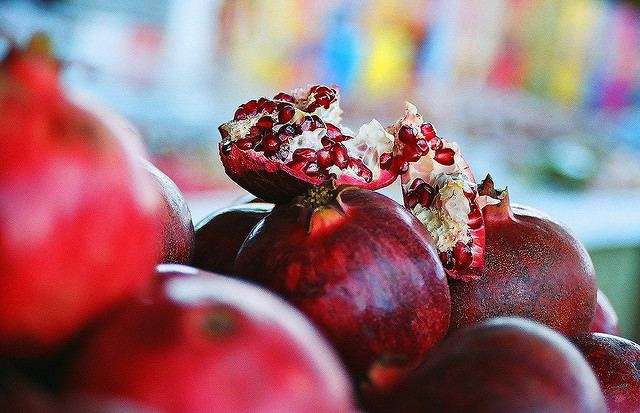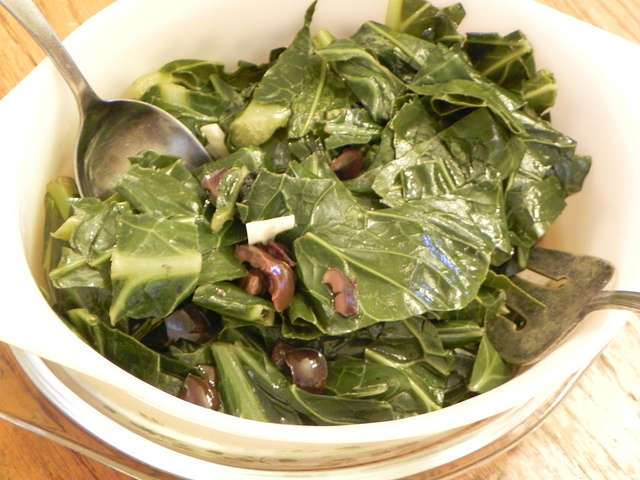How to Get Back to a Normal Sleep Schedule for Back-to-School Parents and Kids
Contrary to what you might think, technology may be extremely helpful for getting your kid's sleep schedule back on track.

Autumn is my favorite time of year, not just because the weather is beautiful, but also because fall brings some of the most delicious and nutritious fruits and veggies into bloom.
The interesting thing is that some of the most nutrient dense produce is also some of the most overlooked. Use these under-appreciated fruits and vegetables to spice up your mealtime, especially when it is so easy to include them.
My husband introduced me to Persimmons 16 years ago when he took me to meet his parents, who grew a giant tree dripping with these orange fleshy fruits in their backyard (photo, top, by eliza adam). Packed with Vitamin A and fiber, these sweet powerhouses are also known for their anti-inflammatory and anti-infective properties.
Try It: Puree the soft fruit and use it instead of oil when baking muffins, or carrot and spice cakes, for a sweet boost of fiber.
I have to admit that Pomegranates are my fall obsession. They are incredibly versatile as they can be added to savory and sweet dishes alike – they can be made into sweet treats, and even used in drinks. Their touted health benefits span from protecting the heart to aiding the preventing of colon, breast and prostate cancer. They can reduce symptoms of depression by stimulating serotonin and estrogen receptors.
Try it: Add pomegranate seeds to your stuffing for an unexpected twist at the Thanksgiving table.

Just a single serving of rutabaga provides you with 50% of the recommended daily value of Vitamin C. Low in calories and a rich source of soluble fiber, this almost unknown root vegetable can be used to maintain digestive health and aid in weight management. With such an impressive profile, it has become a much more interesting and nutritious alternative to potatoes in our home.
Try It: Slice the rutabaga, toss with some olive oil and bake like French fries – your kids won't know the difference!
No, not celery… its root. Aside from being a great source of antioxidants, dietary fiber, vitamins and nutrients, celery root provides many other health benefits. With excellent benefits from analgesic, antiseptic, and anti-allergic properties and its regulation of the digestive system, this root should not be overlooked.
Try It: Eat celery root raw with some hummus for a new take on a mid-day snack.

Loaded with the three major anti-oxidants found in foods – Vitamin A, Vitamin C and Vitamin E – collard greens help strengthen our body's ability to fight the effects of chemicals and free-radicals. With amazing anti-inflammatory benefits, this cruciferous plant helps keep digestive health at its best.
Try It: Add chopped collard greens to a stir-fry mix for a colorful boost of vitamins.
One of fall's powerhouse greens, endive lettuce is low in calories and rich in fiber. It is also packed with Vitamins A, beta-carotene and essentials from the B complex, such as folic acid. Its complex nutritional profile and rich flavor make it a great addition to any salad or stir fry.
Try It: Chop it up and add it to a stir-fry in the last 3 minutes of cooking for that extra crunch. Or, use the sturdy leaves as little bowls and fill with spinach dip or melted brie.

It might be hard to believe, but parsnips are actually more nutritious than carrots! As cousins, their flavor profile is similar making parsnips a great alternative, but unlike carrots, parsnips boast a high concentration of folate and potassium, both integral in keeping our bones, cells and muscles running efficiently.
Try It: Roast parsnips and sprinkle with Thyme and maple syrup for an energizing and sweet side dish.
A few years ago I attended a friend's birthday dinner at a Persian restaurant and enjoyed one of the most memorable meals I've had in years. The reason? Dates. I had never thought to add dates to savory dishes, and found myself completely enthralled by the combination. The best part is that dates are high in fiber and contribute to heart and digestive health.
Try It: Substitute one date per tablespoon of sugar to sweeten your baked goods for a healthier treat. Mix them with hot curried chicken or rice dishes.
It might seem that pumpkins are everywhere during the fall, but the reality is that people rarely take real pumpkins seriously when it comes to meal preparation. Pumpkins are one of the best sources of alpha and beta-carotene, which are essential for cell growth and healthy vision. Not to mention, pumpkin seeds are also a great source of omega-3s, a brain and mood booster.
To cook the pumpkin, use a crockpot, place the pieces in the crockpot with 1 cup water. Cover and cook on high for approximately 4 hours, it's done when it's soft! Scrape it from the rind and sprinkle with a bit of coconut, nutmeg, or cinnamon for a sweet treat.
Be adventurous and add some under-appreciated produce to your shopping list, you'll be glad you did.
Monica Klausner is the Co-Founder of Veestro, a modern, plant-based meal delivery system that makes healthy eating "consistent, delicious and realistic."
Share These Delicious Tips With Your Friends…
Be the first to comment